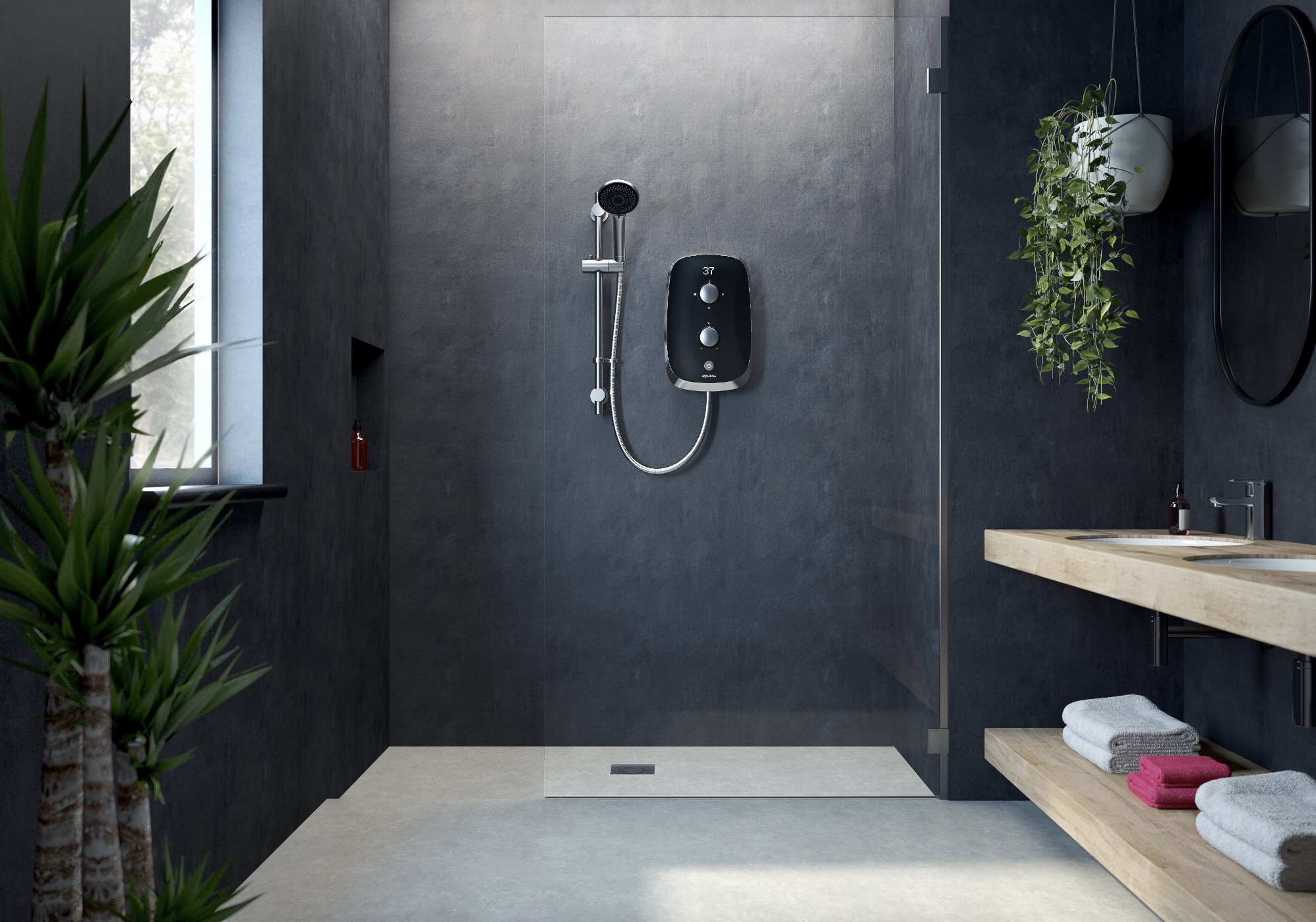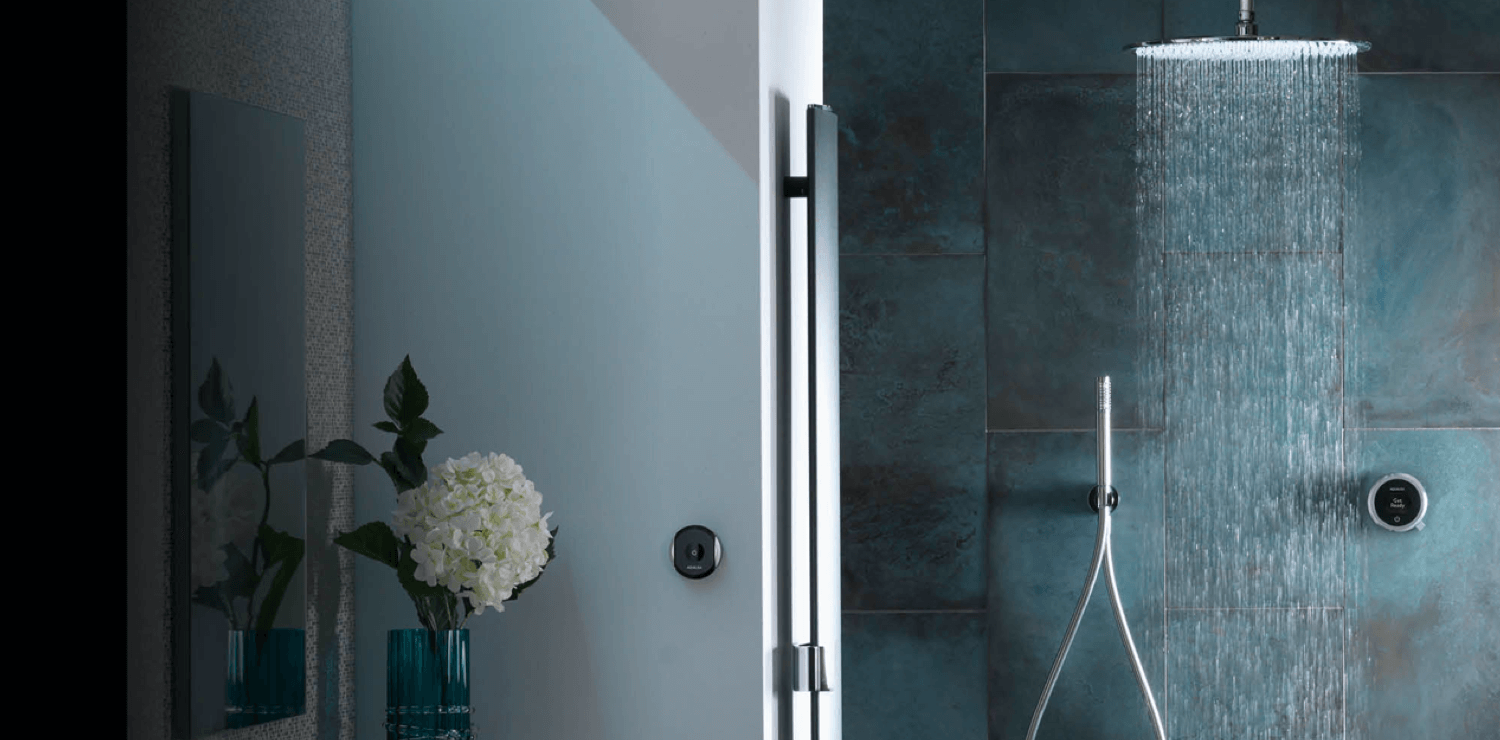Here are some common Aqualisa shower problems, along with simple solutions:
Aqualisa Shower Not Turning On
What can be the cause:
Electrical systems can sometimes fail due to general wear and tear, power surges, or faulty wiring.
The solution:
Always ensure the power supply is turned on and the shower is properly connected. If the shower isn’t turning on, it could be due to a blown fuse or circuit breaker. Resetting the breaker or replacing the fuse could solve the problem. If not, the issue could be a broken or malfunctioning switch, which might need to be replaced.
Prevention so it doesn’t happen again
Regularly check the shower’s electrical connections. If there are frequent power supply issues, consider consulting with an electrician.
Low Aqualisa Water Pressure
What could be the cause:
This could be due to a blockage in the pipes or shower head caused by mineral deposits or dirt.
The solution:
You can remove the showerhead and soak it in a solution of equal parts white vinegar and water for several hours, then use a toothbrush to scrub off any remaining deposits. If the problem persists, you may need to replace the showerhead.
Prevention:
Regularly cleaning the showerhead can prevent buildup and help maintain water pressure. A water softener can help if hard water is an issue.
Fluctuating Temperature
What could be the cause:
Air in the system or a malfunctioning thermostatic valve could cause temperature fluctuations.
The solution:
Let the water run for a few minutes to bleed the system of air. If this doesn’t solve the problem, the thermostatic valve, which controls the water temperature, may need to be replaced.
Prevention:
Regular maintenance checks can help identify issues with the thermostatic valve early.
Leaking Aqualisa Shower Head
What could be the cause:
A worn-out washer or seal can lead to a leaky showerhead.
The solution:
Turn off the water and unscrew the showerhead with a wrench. Be sure to wrap the showerhead with a cloth to avoid scratches. Then replace the worn-out washer with a new one and reattach the showerhead.
Prevention:
Regularly checking and replacing the washers or seals when they start to wear out can prevent leaks.
Faulty Coil
The cause:
The heating coil, which is responsible for heating the water in the shower unit, can sometimes fail due to wear and tear or electrical faults.
The Solution:
If the hot water cuts out or stops completely, the coil could be faulty. This is a component that generally requires a professional to diagnose and replace due to the electrical nature of the part.
Prevention:
Regular maintenance and inspections can help identify issues early. Ensure that the shower is used within its recommended limits to prevent overworking the coil.
Bad Processor or Microchip
Cause:
The processor or microchip controls the electronic functions of the shower. These can sometimes fail due to power surges, moisture, or just general wear and tear.
Solution:
If the shower isn’t working at all or is acting erratically, the processor or a microchip could be faulty. Due to the complexity of these components, they are difficult to replace and it’s often more cost-effective to replace the entire shower unit.
Prevention:
Prevent moisture build-up inside the shower unit to protect the electronic parts. If you’re experiencing frequent power surges, consider installing a surge protector in your home.
Faulty Stabiliser or Flow Valve
Cause:
The stabilizer or flow valve is responsible for maintaining a consistent flow of water. These can become faulty due to wear and tear or if they become clogged with debris.
Solution:
If the hot water cuts out consistently, the stabilizer or flow valve may be faulty. She should first check that the main house and shower valves are fully open. If this doesn’t resolve the issue, it’s best to call in a professional to inspect the stabilizer or flow valve.
Prevention:
Regularly check the valves and keep them free from debris to maintain a steady water flow.
Remember, these are only general suggestions. The exact issue might vary depending on the specific model of her Aqualisa shower. If the problem continues after trying these solutions, you should consult with a professional plumber.


